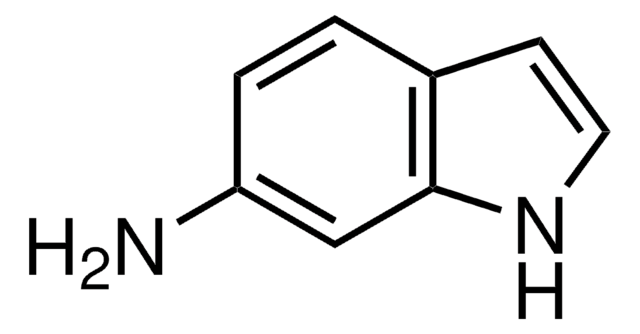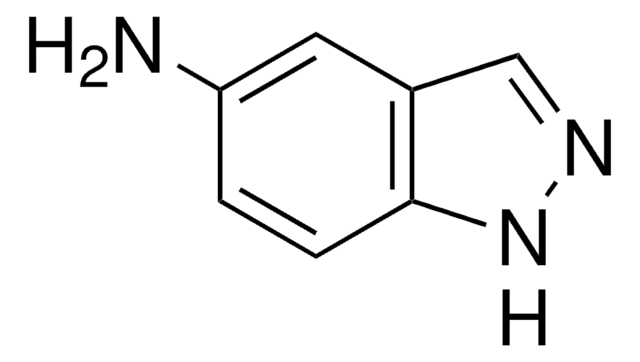A59654
5-Aminoindole
97%
Synonym(s):
5-Indolamine, NSC 61452
About This Item
Recommended Products
Assay
97%
form
crystals
mp
131-133 °C (dec.) (lit.)
SMILES string
Nc1ccc2[nH]ccc2c1
InChI
1S/C8H8N2/c9-7-1-2-8-6(5-7)3-4-10-8/h1-5,10H,9H2
InChI key
ZCBIFHNDZBSCEP-UHFFFAOYSA-N
Looking for similar products? Visit Product Comparison Guide
Related Categories
Application
- Smac mimetics that bind to the BIR2 domain of the anti-apoptotic protein XIAP
- Cytotoxic and antimitotic agents
- Insulin-like growth factor 1 receptor inhibitors
- Antitumoral agents
- Factor Xa inhibitor
- Potential antivascular agents
- Gli1-mediated transcription in the Hedgehog pathway
- Inhibitors of receptor tyrosine kinase with antiangiogenic effects
- PKCθ inhibitors
- HIV protease inhibitors
Signal Word
Danger
Hazard Statements
Precautionary Statements
Hazard Classifications
Acute Tox. 3 Dermal - Acute Tox. 4 Oral - Aquatic Acute 1 - Eye Irrit. 2
Storage Class Code
6.1C - Combustible acute toxic Cat.3 / toxic compounds or compounds which causing chronic effects
WGK
WGK 3
Flash Point(F)
Not applicable
Flash Point(C)
Not applicable
Personal Protective Equipment
Certificates of Analysis (COA)
Search for Certificates of Analysis (COA) by entering the products Lot/Batch Number. Lot and Batch Numbers can be found on a product’s label following the words ‘Lot’ or ‘Batch’.
Already Own This Product?
Find documentation for the products that you have recently purchased in the Document Library.
Our team of scientists has experience in all areas of research including Life Science, Material Science, Chemical Synthesis, Chromatography, Analytical and many others.
Contact Technical Service








![Poly[(R)-3-hydroxybutyric acid] natural origin](/deepweb/assets/sigmaaldrich/product/structures/129/476/7d1c924b-f644-4889-a2d6-d7a923ce382c/640/7d1c924b-f644-4889-a2d6-d7a923ce382c.png)

